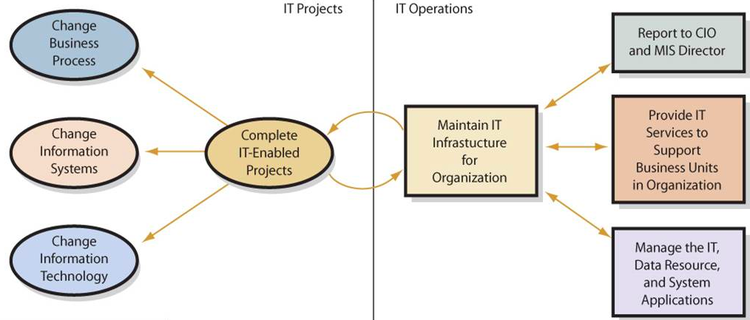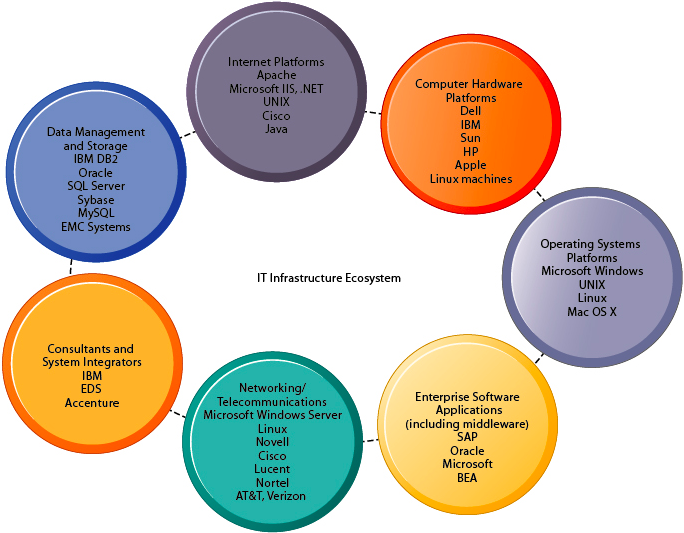Does your company need an IT (Information Technology) department? Once a staple of large corporations, IT functions are now affordable for businesses of all sizes thanks to the advent of cloud computing and IT management software.
Yet, according to one study, only 17% of small businesses are where they want to be with their technology use. This makes sense. A small business has to juggle implementing a website and adopting tools, such as accounting software, along with running a company.
If you’re spending an increasing amount of time managing and troubleshooting your company’s tech, it’s time to map out a formal IT strategy. Whether that entails building out a separate IT department depends on your needs.
Let’s look at an IT department's roles and responsibilities to determine if one makes sense for your company.
Overview: What does the IT department do?
The IT team is most widely known as the group troubleshooting technical issues, but it does far more. From setting up your computer and Wi-Fi networks, to analyzing business data, to delivering decision-making insights, the IT department has an outsized impact on a company and its customers.
An IT organizational structure typically involves the department falling under the oversight of a CTO (Chief Technology Officer), who reports to the company’s CEO.
Depending on the size of the team, an IT department can include specialized roles, such as help desk technicians to troubleshoot tech issues and network administrators who oversee the IT infrastructure and build out the network diagram.
An IT team does so much and has such a significant business impact that a series of standards were developed just for the IT industry. Called the Information Technology Infrastructure Library (ITIL), these standards set IT best practices.
The number and scope of IT responsibilities is astounding. ITIL maps out a whopping 34 management practices required to deliver complete IT services to an organization and its customers.
These 34 ITIL processes were originally grouped under a five-stage structure called ITIL V3. It outlined the steps to implement IT services from designing the service to continuously improving it.
As technology has evolved from on-premises servers to cloud computing, ITIL’s approach also changed to a less-prescriptive and more holistic framework in ITIL V4.
I’ve distilled these 34 practices into the key IT responsibilities in the next section. Check out the current ITIL framework for the full list and to understand the purpose of each practice.

IT teams oversee a business’s technical operations and projects. Image source: Author
The 5 major IT department responsibilities
There are five major areas the IT department is responsible for.
1. Provide technical support
This area is where most employees and customers interact with the IT team, so let’s look at it first. Technical support comprises all aspects of helping customers or staff with the technology used at a company.
This means training people to use new software, answering technical questions, setting up new user accounts, and resetting forgotten passwords. Most teams adopt an IT ticketing system to track and manage requests for help.
Most often, tech support involves troubleshooting technical hiccups. Called “incidents” under ITIL, whenever a technical issue arises, the IT team is asked to provide a solution. Because problems will happen at some point, ITIL developed a practice focused on this area called incident management.
The IT team’s technical support responsibility isn’t limited to reactive tasks such as addressing service requests. They also perform proactive problem management. Here the IT team analyzes recurring incidents to dig into the root cause and provide a long-term fix.
2. Implement and manage IT infrastructure
The most important IT responsibility is the implementation and management of a company’s IT infrastructure. This is no small task. Depending on the size and complexity of the business’s needs, IT infrastructure can take weeks or months to fully implement.
Why is this such a big deal? When a business establishes a technology infrastructure, you’ve got to consider a slew of factors.
- Your company’s hardware requirements: What computing hardware does your business require to execute operations? This includes the computers and mobile devices you and your team need. If you’re setting up an office, you’ll also have to consider wireless equipment such as routers.
- Are you using cloud computing services? Cloud computing allows you to leverage the servers and other IT hardware of a third party, such as Amazon and its AWS (Amazon Web Services) offering, so you don’t have to invest in and maintain this hardware.
- What kinds of software does your company need, and who should have access to it? This area includes digital tools to streamline operations, such as electronic signature software.
- How do you handle changes to your IT infrastructure so they don’t impact your business or customers? Because of their importance, several ITIL practices are devoted to this area, including change management and configuration management. You don’t want a small configuration change to cause your systems to go down.
- Do you have a website? If yes, your IT team should oversee it. This entails the initial setup, as well as ongoing maintenance and security.
This list just scratches the surface. Many other IT infrastructure considerations are required based on the specific needs of your company.

A sample of the various components involved in IT infrastructures. Image source: Author
3. Strategize technology investments
Technology constantly evolves, and so do your company’s IT needs. The IT team assesses the technical needs of your organization, as well as the merits and costs of a potential solution. For example, do you invest in chat software to improve your company’s customer support?
These technical investments streamline operations, and some are mandatory to conduct business, yet the costs quickly add up. It’s the IT team’s responsibility, typically that of a manager or the CTO, to analyze the cost-benefit ratio and provide recommendations.
These are some of the considerations around tech investments.
- What kinds of hardware and software should you invest in? Do you build your own software or use a third party’s solution?
- What technology must you adopt to maintain or expand your business? What about tools to give you a competitive edge?
- What kinds of communication systems do you want to implement? Do you need a phone system, video conferencing capabilities, or email systems?
- When it’s time to decommission old technology, what approach do you adopt?
- How do you best spend your IT budget to get the biggest return for your technology investment?
Once technology is acquired, the team performs IT asset management practices to deploy and manage your tech investments. Software requires ongoing updates.
Hardware can fail and necessitate repair or replacement. Your company’s technology is a dynamic environment requiring regular oversight, and the IT department performs that responsibility.
4. Maintain IT security
Imagine if your business data were stolen or your website hacked so customers could no longer access it. The security of your IT network is a critical component.
IT security is typically grouped under the implementation and management of IT infrastructure, but it’s so important -- yet so often under-appreciated -- that I carved out its own section.
A lot is involved in considering the security of your company and its computer network. Depending on your business model and needs, the kind of security you must implement will vary.
IT security includes considerations such as:
- Who can have access to your IT network?
- How do you detect and prevent hackers from bringing down your website or other critical systems?
- How do you keep your business data secure in order to meet all privacy and compliance standards for your industry?
Legal and regulatory requirements fall under IT security. Governments demand strict adherence to technology standards, which vary by state and country.
For instance, California has tighter privacy rules than other states. It’s up to the IT team to incorporate these requirements into your technology use so your company is compliant.
5. Execute IT-specific projects
The final piece of an IT team’s responsibilities is the execution of IT-specific projects. Any implementation of technology is an IT project. Examples include launching a company website and rolling out reporting capabilities to gain the insights needed to manage and expand your business.
These one-off initiatives are often undertaken to deliver a key business benefit. Technology is complex, so having technical experts execute the project is necessary to deliver the results you’re looking to achieve.
How to determine if you need an IT department
If this list of IT responsibilities aligns with your business needs, or you’re spending an increasing amount of time on technical tasks, you require an IT department.
Keep in mind that options for an IT team are not limited to hiring IT employees. You can outsource your IT needs, and many firms today offer full-time, part-time, or on-demand IT services.
Map out your company’s IT needs, then investigate the IT implementation options that make sense for your business and budget. When you meld an IT strategy with your business needs, you’ll be better able to make the right decision for the successful growth of your company.
Our Small Business Expert
We're firm believers in the Golden Rule, which is why editorial opinions are ours alone and have not been previously reviewed, approved, or endorsed by included advertisers. The Ascent does not cover all offers on the market. Editorial content from The Ascent is separate from The Motley Fool editorial content and is created by a different analyst team.